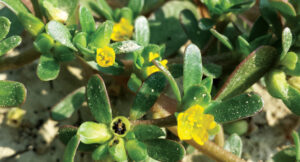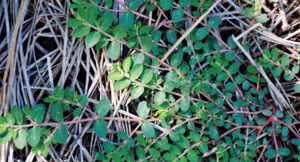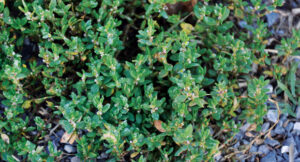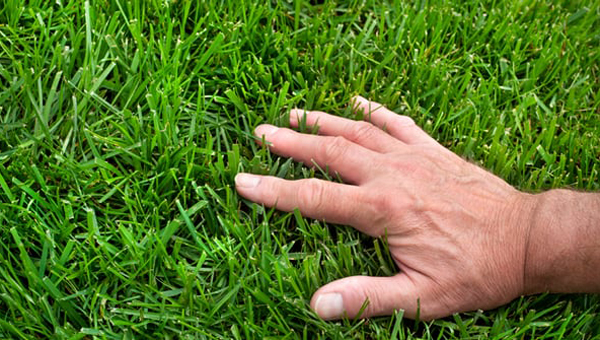As many of us start enjoying the nice spring weather, the hot summer months are starting to rear their ugly heads from right around the corner. And with them comes a slew of new problems that will be quick to pop up in lawns and landscapes.

Many summer weeds are annuals that germinate quickly in the spring or early summer and grow rapidly in the warmer months. They are highly adaptive, can thrive in poor conditions, spread quickly, produce large amounts of seeds and are tough to remove once established.
Jay Wyrick, turf and ornamental agronomist at FineTurf in North Carolina, says many of them come in several varieties, making identification a crucial step in managing these pests. Once that happens, one overarching preventative measure he says will make life easier down the road is to have thick, well-maintained turf that can resist weeds popping up.
“That’s the best weed control out there,” Wyrick says. “You’re never going to (fully) herbicide your way out of things. Mother Nature is doing her job when there’s an opening (in the lawn) by filling that void. That’s just something that’s going to happen.”
Wyrick sat down with us at LM to take a look at the characteristics and control measures for some of the most common summer weeds:

Purslane (Portulaca spp.)
While there are dozens of purslane varieties in the U.S., it is generally a broadleaf weed that forms a dense, tangled mat close to ground. Fleshy leaves alternate on opposite ends of the smooth stem, and on top of spreading by seed, purslane is even trickier to control since it can spread through stem fragments that can root at its nodes. Wyrick recommends using 2,4-D and dicamba as a postemergent.

Foxtail (Setaria spp.)
Wyrick says there are a small handful of common varieties in the U.S., including yellow, green and giant foxtail. This is an upright, clumping grass that can range typically from 1 to 3 feet in height with leaves that often have a spiral twist. They are topped with a long, fuzzy seed head, and a prodiamine preemergent is effective with an application around February or March.
“Preemergents do a pretty good job of it in the spring,” Wyrick says. “When we do see it in the summer, we think quinclorac would probably be the best.”
Spurge (Euphorbia spp.)

This pest also has many key species, including prostrate, spotted and creeping spurge. It forms a low mat over the ground and, depending on the type, is a light to dark green color with oval leaves. Spotted spurge is known for its purple or red spot in the center of leaves, and Wyrick says one key giveaway for identification is a white, milky sap inside the stem. Like many summer weeds, Wyrick says reacting to spurge with postemergent applications is likely the most effective strategy.

Common knotweed (Polygonum arenastrum)
Common knotweed, also known as prostrate knotweed, is another low-growing pest with wiry, slender stems that form mats. Wyrick says it’s sometimes confused with spurge, and the branching stems can have a zigzag appearance. Leaves are either linear or football-shaped, and like other summer weeds, Wyrick recommends most 3-way products, with 2,4-D, triclopyr and MCPP working well.


